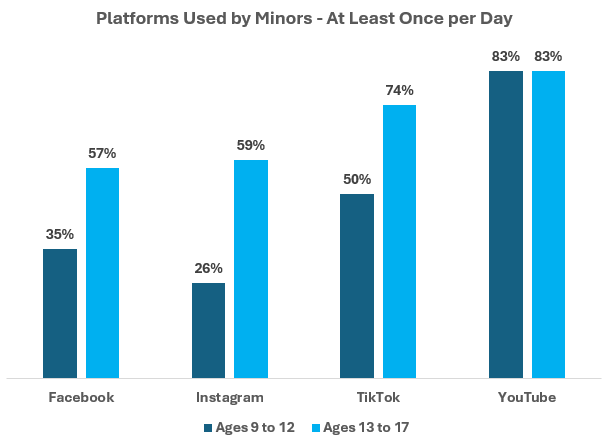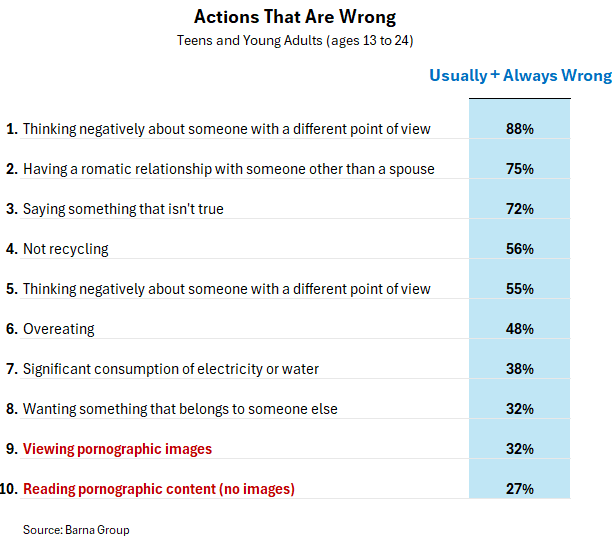Youth and Pornography: A Growing Crisis
Following our recent examination of the adult pornography crisis, we now turn our attention to an even more concerning aspect: how pornographic content increasingly affects children and teenagers, and the risks this poses to their development.
Smartphones are the primary gateway to pornographic content. With these devices in the hands of 95% of teens and 42% of 10-year-olds, youth protection has reached a critical point.
__________________
Early Exposure and Widespread Access
Recent data reveals disturbing trends. According to Common Sense Media, the average age of first exposure to pornography is now 12 years old.
Nearly three-quarters (73%) of teens report having encountered online pornographic content, with more than half (54%) experiencing this exposure at age 13 or younger.
While 44% of teens (ages 13-17) acknowledge deliberately seeking out pornographic content, 58% report accidental exposure - showing how easily young people encounter inappropriate content online.
Regardless of intent, 49% of teen report coming across pornography regularly.
__________________
Where Youth Encounter Pornographic Content
Teens seeking pornography have no trouble finding it, with access points extending far beyond traditional adult websites.
Notably, two of the three most common platforms teens use to view porn - social media (38%) and video sites (34%) - are mainstream platforms that youth use daily. According to Common Sense Media research, here are the top ways teens view pornographic content:
Most alarming: the platforms children use daily are the same ones serving as gateways to porn. Thorn's research on online platform use illustrates this overlap:
Despite content moderation efforts, the volume of uploads and evolving tactics by bad actors create an ongoing challenge that leaves youth vulnerable.
Even schools offer no sanctuary - 30% of teens report viewing pornography during school hours on both school devices and personal phones.
__________________
Teen Motivations and Attitudes
According to Barna Group’s research on teens, the primary reasons for seeking out porn extend beyond sexual interest.
While personal arousal is the primary motivator, a troubling 46% of teens turn to pornography simply out of boredom. This statistic, combined with curiosity, underscores the risks of excessive unsupervised online time.
Even more troubling, Barna's research shows only 32% of youth believe viewing porn is wrong - ranking lower than common shortfalls like not recycling (55%) or overeating (48%).
This moral disconnect reveals a critical education gap: teens lack awareness of both the pornography industry's dark practices, including sex trafficking, and its personal risks, as many rely on pornography as their source for learning about sex and relationships.
Education Void: Understanding the Risks
Despite widespread exposure, only 43% of teens report having discussed pornography with a trusted adult.
This communication gap is particularly concerning given that 45% of teens believe online pornography provides helpful information about sex. Without proper guidance, teens become vulnerable to peers, social media, and profit-driven companies capitalizing on their sexual curiosity and insecurities.
Research shows frequent porn exposure during adolescence can lead to:
Distorted views of relationships and consent
Increased risky sexual behaviors
Challenges forming healthy intimate relationships
Higher rates of anxiety and depression
Negative body image and self-esteem issues
These risks, combined with teens' lack of awareness about the disturbing realities of the pornography industry, underscore the urgent need for better education and open dialogue.
The path forward requires action on multiple fronts.
__________________
Moving Forward
Addressing youth porn exposure requires a multi-faceted approach:
Encouraging delayed introduction of smartphones
Implementing stronger device controls in schools and at home
Enhancing online age verification systems and content screening
Increasing education about online risks and healthy relationships
Supporting parents with tools and guidance for protecting children online
Most critically, we must foster environments where youth can openly discuss these issues with trusted adults. With emerging technologies like AI-generated explicit content and the increasing risks from sexting and manipulated photos, the urgency for better protection and education grows more critical each day.






